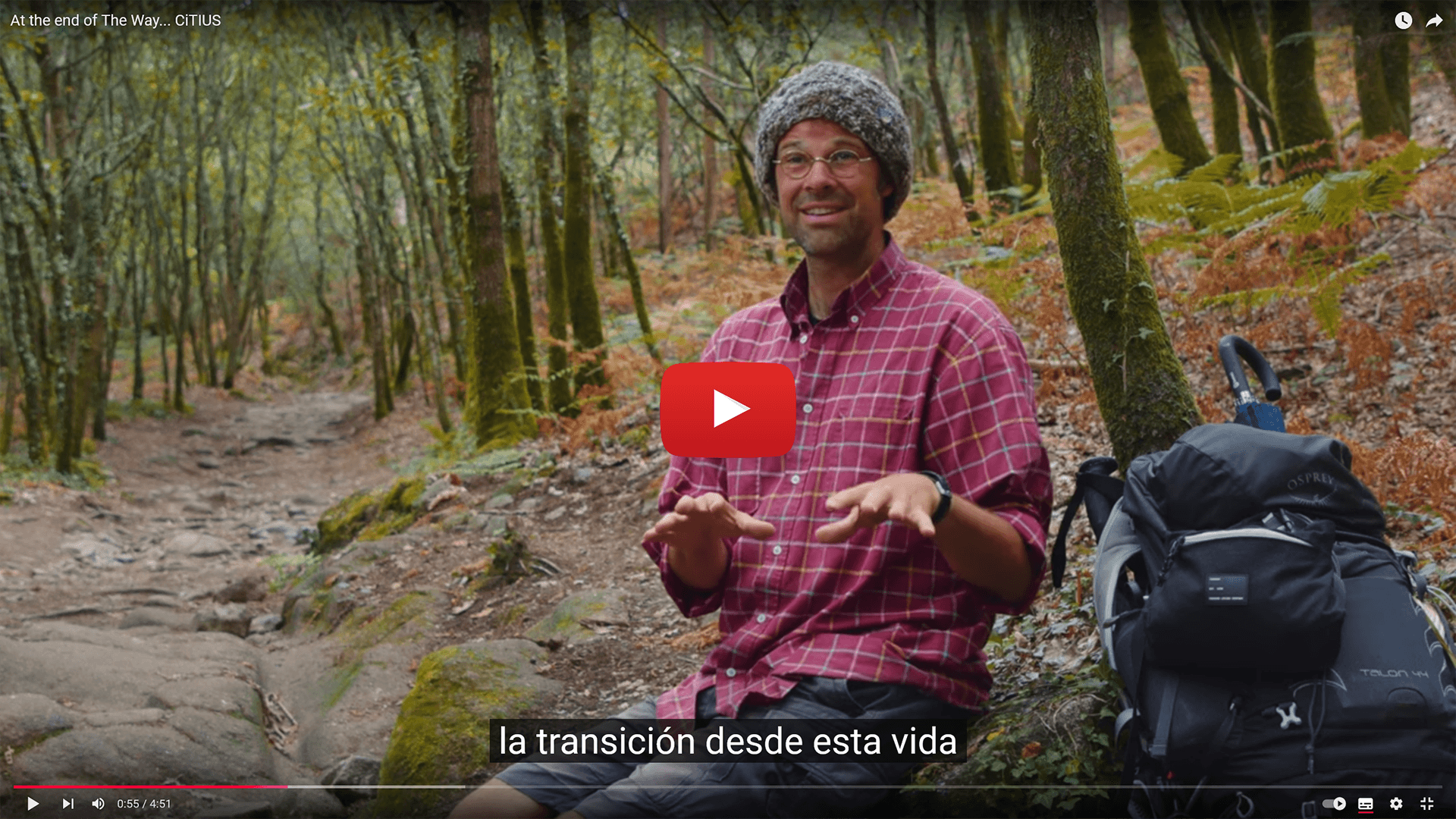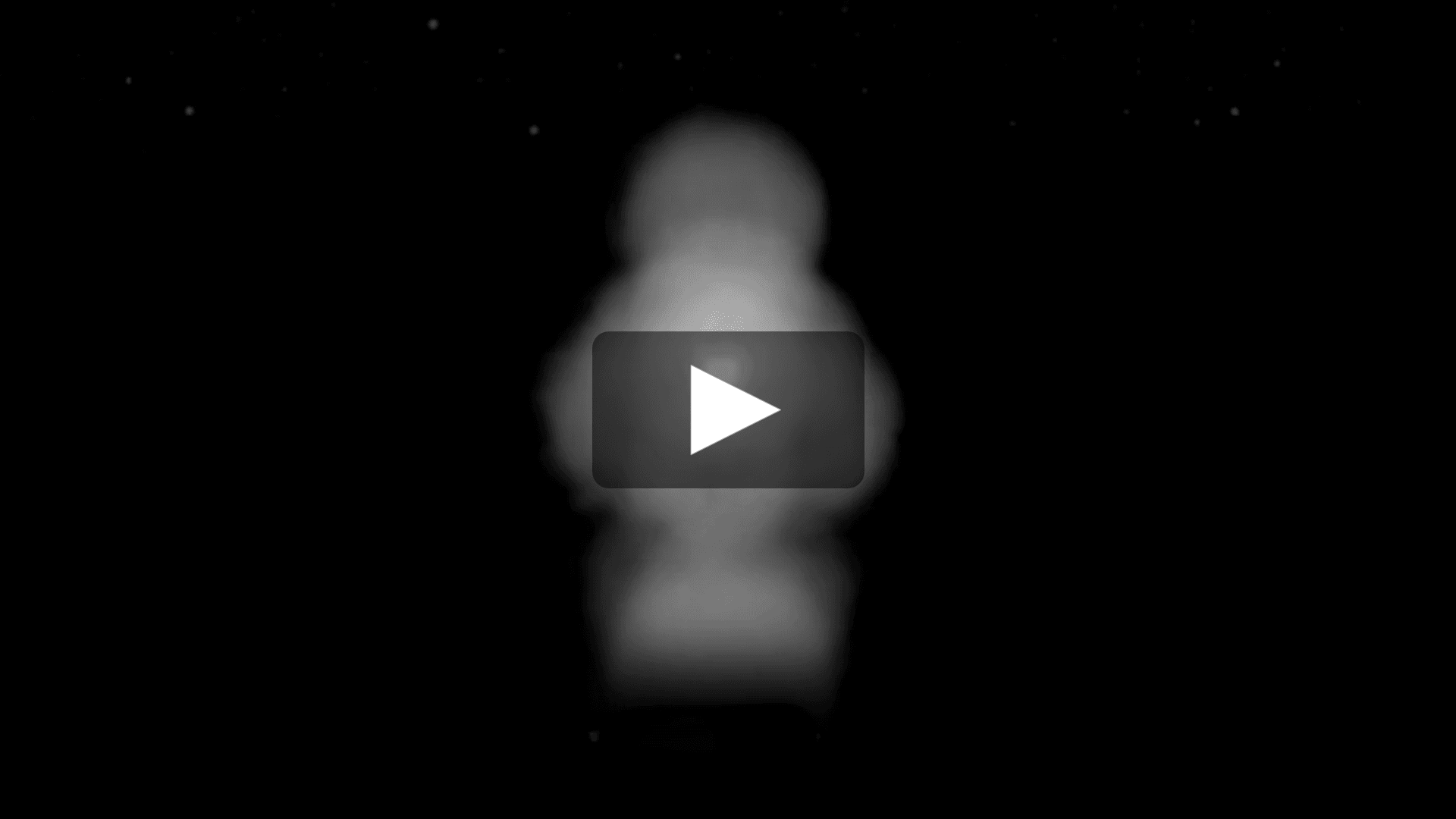
A pioneering project in the world will explore the restorative use of virtual reality to alleviate death anxiety.
Researcher David Glowacki leads a new study from CiTIUS at USC, sponsored by the philanthropic institution ‘Tiny Blue Dot Foundation’ (USA), which has selected the project of the center's 'Intangible Realities Laboratory' (IRL) among the only 12 initiatives it will fund worldwide in the field of neuroscience.
'Luminous beings are we, not this crude matter’. It was the year 1980 when, at the premiere of the second installment of the film saga 'Star Wars' ('Episode 5: The Empire Strikes Back'), Master Yoda invited Luke Skywalker to 'feel the Force' in the energy around him. Just a few years later (1986), quantum physicist David Bohm wrote towards the end of his life that 'mass is a phenomenon of connection of light rays coming and going, as if freezing them into a pattern. Thus matter, so to speak, is condensed or frozen light’. An idea scientifically studied, in turn, sixty years earlier (1926) by physicist and philosopher Erwin Schrödinger in his famous wave equation, which described the evolution of matter waves over time to understand the wave behavior of subatomic particles.
Four decades after the reflections of David Bohm and Master Yoda, and almost a century since Schrödinger’s equation, a new research project from CiTIUS (Singular Research Center in Intelligent Technologies at the University of Santiago de Compostela) will delve into the study of the same idea -matter as 'energetic essence'- to help people with terminal illnesses and their loved ones face the final phase of life, with the purpose of alleviating the pain and anxiety caused by the proximity of death.
It will do so through Virtual Reality (VR); a transversal field of research extremely familiar to David Glowacki, a Doctor in Quantum Mechanics exploring the various possibilities of this technology from Santiago de Compostela (Spain) along with his research group at the Intangible Realities Laboratory (IRL). Glowacki, who joined the USC research center in 2022 through the talent recruitment program Oportunius from the Galician Agency for Innovation (GAIN - Xunta de Galicia), is also leading the ‘NanoVR’ project, currently under development and financed with nearly 2 million euros by the European Research Council (ERC) with one of its prestigious Consolidator Grants.
The scientist, a native of Milwaukee (Wisconsin, USA), celebrated the accomplishment of the new project, describing it as a "cutting-edge" research. "I am excited to have the opportunity to lead a project with global impact potential originating from right here, in Santiago de Compostela, as this city has a reputation as a place for spiritual contemplation." "It's very poetic," he continues, "that this new project, which aims to use technology to help us contemplate our own mortality constructively, originates here. I look forward to seeing what comes out of this work," notes David Glowacki.
The new scientific challenge is named NUMADELIC ('Experiences to improve mental health outcomes in patients with life-threatening illnesses), and has received financial support from the North American foundation Tiny Blue Dot Foundation, which allocated a budget of over $900,000 for the next three years. This ambitious initiative will apply virtual reality technologies to recreate near-death experiences or NDEs (English acronym for ‘Near-death experiences’), with the goal of reducing anxiety and promoting emotional well-being in terminal patients and their loved ones. A type of experience that Glowacki himself experienced firsthand, as he narrated in an interview for his imminent incorporation to CiTIUS.
Researcher David Glowacki narrates his near-death experience in an interview prior to his incorporation to the USC in 2022. / CiTIUS
An immersive experience against anxiety
Perhaps more than any other experience, death holds a fundamental meaning due to its inevitability. However, near-death experiences (NDEs) seem to swiftly and drastically diminish the anxiety associated with this final process. Many people who have undergone these experiences have reported that consciousness persists beyond material existence.
The name of the new project ('NUMADELIC') comes from the idea of 'numadelic' focus: a term coined by the Intangible Realities Laboratory that combines the Greek words pneuma (meaning "breath," "spirit," or "soul"), and delein, (meaning "to reveal" or "to manifest"). Thus, the numadelic flow can be considered a flow that "manifests the spirit," and in the case of this new project, it symbolizes the use of virtual reality to design experiences inspired by the accounts of people who have had near-death experiences.
This approach evokes a concept from Tibetan Buddhism known as Clear Light (CL) or ‘pure light’, allowing people with terminal illnesses to experience fundamental aspects of NDEs, such as the perception of consciousness beyond the physical body. The goal, in any case, is to alleviate the fear, anxiety, depression, and social isolation typically faced by these patients and their families. Clear Light not only offers a transformative perspective on life and death but also holds the potential to spark a new cultural debate on these topics. Through laboratory studies, interviews, and physiological measurements, the project aims to optimize this program to maximize its healing benefits. NUMADELIC also includes a randomized controlled trial (RCT) in collaboration with palliative care physicians and doulas (people who provide emotional, practical, and spiritual support to those in the dying process and their families), to assess its impact on patients' mental health, both in the short and long term.
Expanding the boundaries of human perception
NUMADELIC is one of 12 major projects funded worldwide by Tiny Blue Dot in 2024, following a meticulous review process among nearly 200 proposals received globally, which were evaluated through a rigorous double-blind review process (an evaluation system where both the evaluator and the candidate person or institution remain anonymous to each other to avoid biases or prejudices). In the second edition of this global call, known as ‘The Science of Perception Box’ (‘The Science of the Perception Box’), the foundation will support 11 other investigations led by institutions from three countries (United States, Netherlands, and Australia), in addition to CiTIUS's own project, the only one in Spain.
Constituted as a non-profit organization, the Tiny Blue Dot Foundation has the mission to help people understand and expand the boundaries of their perception. Its primary objective is to develop safe, effective, accessible, and scientifically grounded tools and techniques that reduce suffering, increase personal and collective acceptance, and transform emotional crossroads (like trauma or anxiety) into opportunities for growth and well-being. Through its prestigious annual call, the foundation supports international projects exploring how modifying human perception can have tangible benefits on people's quality of life.
NUMADELIC fully aligns with these purposes, as by offering a transformative tool to explore the connection between life and death, it represents a significant advancement in how human beings understand and face these universal challenges. The project will be developed in Galicia (Spain) and the United States (through the technology startup Anuma), in close collaboration with the Oncology Directorate of the Complexo Hospitalario Universitario de Santiago de Compostela (CHUS), where the first controlled trials will begin in March 2025. Although the patient group for this initial phase is already defined (a total of 40 people will participate, as well as a small group of patients without a medical diagnosis), "in the future, we hope to expand the control groups and, where appropriate, explore new possibilities for scientific and technological collaboration," state the IRL.
'Living' technology (and for life)
NUMADELIC highlights the ability of technology to transcend disciplines and improve people's lives. "Demonstrating that multi-user virtual reality environments can help alleviate the anxiety and depression faced by people with terminal diagnoses, such as some types of cancer, represents a significant challenge in our research."
"It is important to develop new ways to support the mental health of those facing illness, as well as that of their families and loved ones." From the IRL lab, they explain that modern medicine has developed a wide range of approaches to treat the physical bodies of patients with life-threatening illnesses until the time of their death; however, there are significantly fewer resources available to help patients manage the fear, uncertainty, and loneliness that often accompany a terminal diagnosis. NUMADELIC is born with the purpose of contributing to the development of new technologies addressing that shortcoming.
"This project has the potential to transform our attitudes towards death and the dying process, something our culture desperately needs," opines David Glowacki. "Broadly speaking, our society tends to ignore the reality of death, instead emphasizing survival above all." "This is not sustainable in the long term," he continues. "Eventually, we will need to develop tools to talk, reflect, and deal with death that match the level of sophistication we have achieved in other areas," explains the researcher.
Video: ‘Numadelic Flow’: the human body dissolved in energetic luminosity experiences a 'coalescence' with other bodies, as described in the previous work published by Glowacki et alia in Nature Scientific Reports / David Glowacki / Intangible Realities Laboratory (IRL).
NUMADELIC draws inspiration from previous research by the IRL lab, whose expertise in virtual reality has demonstrated how this technology can induce transcendent states and generate health benefits comparable to those achieved with psychedelic drugs, but in a controlled and safe manner. These studies, published in top-impact scientific journals like Nature Scientific Reports, laid the groundwork for adapting these types of tools to medical contexts.
The new project also reinforces the position of CiTIUS, a center co-financed by the European Union through the Galicia Feder Program 2021-2027, as a benchmark for scientific and technological innovation in intelligent technologies. David Glowacki, one of the world's leading figures in virtual reality, affirms that the award of this grant to the center "is significant recognition of the excellent research being conducted at CiTIUS and, more broadly, within the Galician research and innovation ecosystem. Finally, it is an extraordinary indicator of the success of the Oportunius Program, promoted by GAIN to attract international research talent to the region," concludes the principal investigator of NUMADELIC, for whom this project has deeply intimate implications.
"Personally, this new challenge means a lot to me," confesses the American scientist. "In 2006, I had a near-death experience that transformed my attitude towards it. I did not feel fear, but a sense of peace, curiosity, and wonder, as if I were moving towards a state of rest in another dimension. The multi-user virtual reality experiences we are developing with funding from Tiny Blue Dot are based on the phenomenology of my own experience, and I hope they can help convey to those facing death the same transcendental sense of peace that I experienced when confronting it." "After all," concludes Glowacki, "that's what we seek: to serve people through science and technology."


